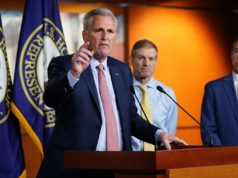
Not only is a plan missing in action, but so is the funding to support an infrastructure program. And, perhaps the 900-pound gorilla in the picture is bipartisan congressional support for the plan.
ADVERTISEMENT
President Trump continues to promise a major initiative to address the nation’s aging and deteriorating roads, bridges, water works, transit systems, dams and other infrastructure. He says his program, although completely sans details, will rely heavily on private-sector capital and public-private partnerships (P3s) possibly incentivizing investment funds in various ways.
Many state and local officials have put possible private-sector partners’ phone numbers on speed dial. Financial experts are ready and have been studying investment prospects. Contractors are scrambling for details about shovel-ready projects and economic development teams are eager for the jobs that will be created. However, as time slips by, the president’s infrastructure “plan” is becoming more akin to an infrastructure “notion” in the minds of some public officials. And, after the failure of attempts to end “ObamaCare,” it is unclear what the administration intends to prioritize next.
In the meantime, public officials at the state and local levels of government are running out of Band-Aids to patch up critical infrastructure and public assets in dire need of attention. They are scrambling to find alternative funding in case the federal government abandons all efforts for infrastructure reform. In New York this week, officials announced that a proposal to build a second rail tunnel under the Hudson River and upgrade rail needs in both New York and New Jersey has a backup plan in place. Federal special program grant funding was anticipated to pay for half the $24 billion costs. Now that the infrastructure plan is lying dormant and there is no word if the grants will continue, Gateway Program officials say their backup plan will be to seek funding from a public-private partnership.
Hoping to avoid another setback, most expect the president to take his time and make sure all of his ducks are in a row before laying out an infrastructure plan that will pass muster in Congress. Projections of when that will happen depend on which unnamed source you believe. Some say the infrastructure plan could be announced next month, some say it will not be acted on before Congress’ August break. Others believe it could be pushed into 2018. Now there is also talk that Trump’s next attempt at a legislative victory may be a dual agenda – tax reform and rolling out an infrastructure program.
There is great support for the administration to launch a “rebuilding of America” program in any form whatsoever. Both Republicans and Democrats are on record as favoring it. It’s an issue that could bring together both sides of the aisle in Congress. Or, it could leave Trump with another failed attempt to get bipartisan support on an important issue.
Earlier, because they were confident that an infrastructure funding solution was imminent, elected officials responded to a presidential request for lists of projects awaiting funding, many of them shovel-ready and almost all of them long overdue. One step forward… But then the ObamaCare repeal effort began to flounder and infrastructure moved to the back burner. Two steps back…
Trump’s pre-inauguration infrastructure plan relied heavily on proposed tax credits that would incentivize private investment in projects and bring an abundance of private capital to the table. Public-private partnerships were a key component of the infrastructure financing equation. Interestingly enough, there is little need for the federal government to find funding or even find additional ways to incentivize private-sector investment. Private-sector investors have billions at their disposal and are eager to fund public projects. The only thing really needed to spur public-private partnerships is support at the federal level and a little regulatory relief to reduce project timelines so that investors and contractors are incentivized to focus on the U.S. and not Canada or Europe.
Stakeholders – from government officials to private-sector contractors – are eager to collaborate to rebuild America’s infrastructure. But, most say they feel as if they are bouncing around in a pinball machine. Patrick Jones, International Bridge, Tunnel, and Turnpike Association executive director, acknowledged the uncertainty, saying, “I think it’s fruitless for us to predict precisely what we’re going to see from this administration.”
Time marches on and infrastructure in America continues to deteriorate. The cost of inaction is huge and the missed opportunity to create thousands of new jobs is regrettable. Late last month at a meeting with a group of governors, Trump again pledged his support for the cause, saying, “Infrastructure – we are going to start spending big on infrastructure.”
And a cacophony of state and local government officials responds, “When?”
Mary Scott Nabers is president and CEO of Strategic Partnerships Inc., a business development company specializing in government contracting and procurement consulting throughout the U.S.
The views expressed by this author are their own and are not the views of The Hill.







